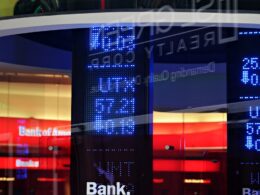India’s stock markets stumbled on Tuesday, August 5, 2025, with the BSE Sensex closing down by 308.47 points (0.38%) at 80,710.25 and the NSE Nifty50 losing 73.2 points (0.3%) to settle at 24,649.55. The selloff came as global sentiment soured following US President Donald Trump’s threat to impose “substantial” tariffs on Indian imports—a move aimed at pressuring India over its continued purchase of Russian oil.
The pressure was clear right from the opening bell: Sensex started the day at 80,946.43, down nearly 157 points from Monday’s close of 81,018.72, and never recovered above the crucial 81,000 mark. The Nifty50 mirrored the weakness, opening at 24,720.25 and sliding below the key 24,700 level by mid-session.
Sectoral Rout and Stock Movers
All major sectoral indices ended in the red, led by heavy losses in IT (down over 1%), pharma (-0.83%), FMCG (-0.72%), and especially oil & gas (-0.96%). Market heavyweights like Adani Ports, Infosys, ICICI Bank and Reliance Industries were among the top drags on Sensex. Not all was gloom: Nifty Auto managed a modest gain of 0.37%, while metals and consumer durables eked out tiny increases of 0.09% and 0.12%.
Adani Ports & SEZ stood out for positive reasons, reporting a consolidated net profit jump of 6.5% year-on-year to ₹3,314.59 crore for Q1 FY26—up from ₹3,112.83 crore last year—even as broader market sentiment remained cautious.
Meanwhile, Berger Paints disappointed with an 11% drop in consolidated net profit to ₹315 crore for the June quarter versus ₹353.6 crore a year ago.
Global Cues and Investor Sentiment
The tariff threat wasn’t the only concern on investors’ minds: potential disruptions in Russian oil supply and persistent US pressure on India to curb imports added fresh uncertainty about energy prices and inflation outlooks.
Interestingly, Asian stocks opened higher on Tuesday thanks to optimism about possible US interest rate cuts in September—after Wall Street logged its strongest daily rally since May—but domestic factors kept Indian equities under pressure.
Looking ahead, analysts say that even with pockets of resilience (such as in smallcap shares and some specialty pharma stocks), volatility could remain elevated until there’s more clarity on US-India trade tensions and global energy markets.










